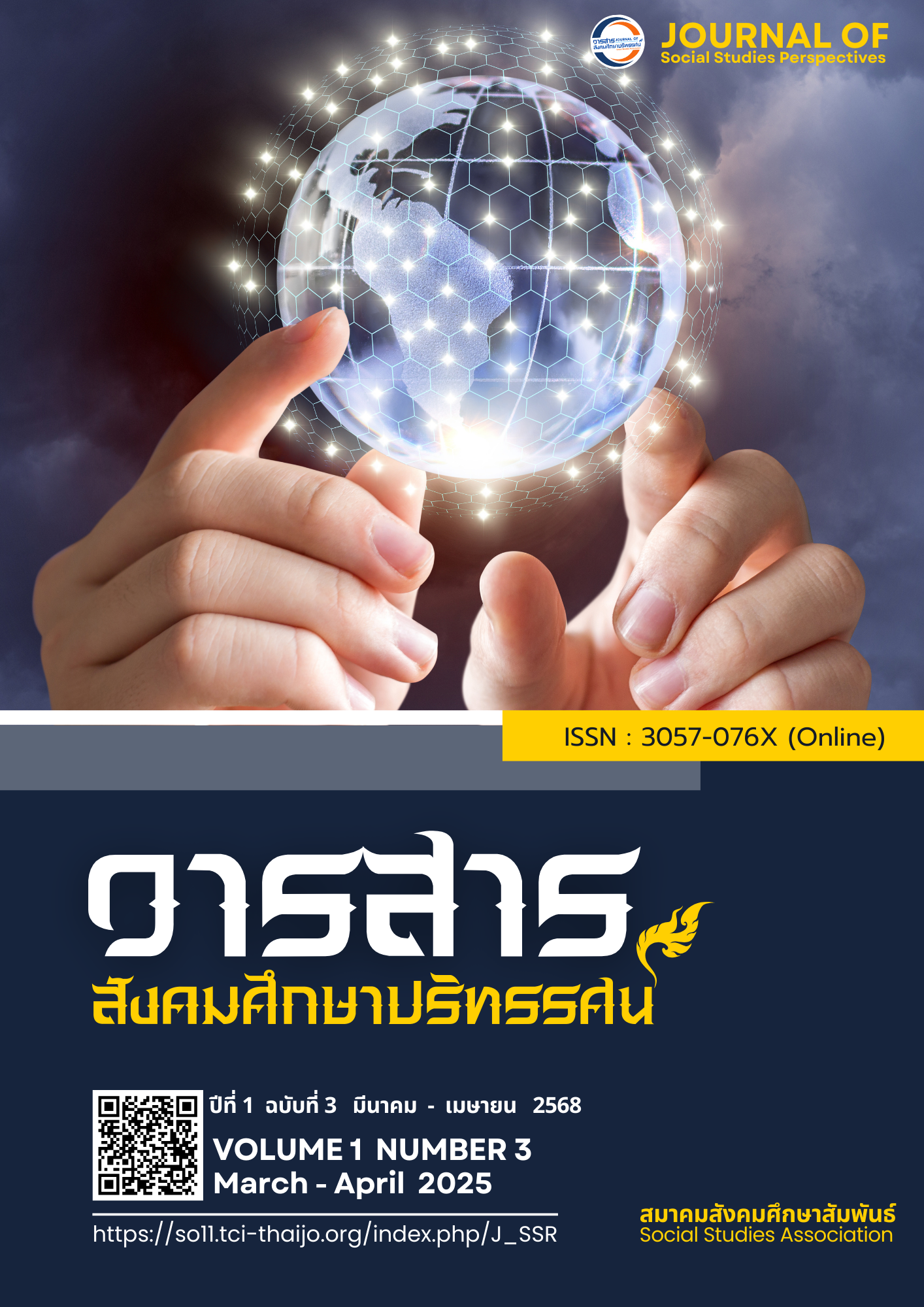A STUDY OF MATHEMATICS LEARNING ACHIEVEMENT ON THE TOPIC OF REAL NUMBERS USING THE OPEN APPROACH COMBINED WITH THE THINK-PAIR-SHARE TECHNIQUE FOR STUDENTS IN GRADE 8
DOI:
https://doi.org/10.64186/jsp1570Keywords:
Think-Pair-Share Technique, Real Numbers, Open Approach Learning ManagementAbstract
The research article has the following objectives : 1) To study the mathematics achievement in the topic of real numbers through an Open Approach combined with the Think-Pair-Share technique for 2nd-year high school students, compared to the 75% criterion. 2) To compare the mathematics achievement in the topic of real numbers before and after learning through the Open Approach combined with the Think-Pair-Share technique for 2nd-year high school students. The sample group for this study consisted of 28 students from the second year of high school at ChaturakPattarapimarnRajchadapisek School, selected through purposive sampling. The research tools used included a lesson plan for the subject content and a test to measure mathematics achievement. The statistical methods used to analyze the data included percentage, mean, standard deviation, and statistical testing. The research findings were as follows: 1) The mathematics achievement in the topic of real numbers, using the Open Approach combined with the Think-Pair-Share technique, met the 75% criterion, with statistically significant results at the .05 level. 2) A comparison of mathematics achievement in the topic of real numbers before and after the learning process showed that the students' scores after the learning process were significantly higher than before, with statistically significant results at the .05 level.
References
Byerley, R. A. (2002). Using multimedia and "active learning" techniques to "energize" an
introductory engineering thermodynamics class. Frontiers in Education Conference.
Chankiew, T. (2021). Learning through creative problem-solving processes combined with
think-pair-share technique to enhance creative problem-solving ability in mathematics
of grade 7 students. Srinakharinwirot University.
Heapan, P. (2019). Teaching with an open approach to promote mathematical thinking and
self-learning. [Publication details, if available].
Inprasith, M. (2004). Teaching using open approach in mathematics classrooms in Japan.
Faculty of Education, Khon Kaen University.
Ministry of Education. (2008). The basic education core curriculum B.E. 2551 (2008) (2017
revised ed.). Cooperative Printing of Thailand Limited.
Paween, W. (2022). The effect of learning activities using open approach combined with
think-pair-share technique on mathematics achievement and problem-solving ability
of grade 10 students. Journal of Educational Research, Faculty of Education,
Srinakharinwirot University, 17(2).
Phuphatcharakun, R. (2008). A comparison of mathematics achievement of grade 5
students between deductive teaching methods combined with cooperative learning,
think-pair-share technique, and traditional teaching methods (Master's thesis). Thaksin
University, Songkhla.
Phudee, W. (2020). Mathematics teaching in the digital era: Methods and tools. Journal of
Science and Science Education, 3(2).
Sarasuwan, W. (2020). The effect of learning activities using open approach on
mathematics achievement and problem-solving ability of grade 5 students.
Ramkhamhaeng University Journal of Education.
Saduakdee, S., Onnom, T., Rungsawang, N., Khongmanee, P., & Ngoksin, W. (2022). Using
mathematics games as a medium for cooperative learning with think-pair-share
technique on pyramids, cones, and spheres for grade 9 students. Naval Academy
Journal of Social Sciences, Humanities, and Education, 9(1), 145-156.
Supamas, K. (2018). Teaching mathematics using the open approach to develop problem-
solving skills of grade 4 students. Research and Curriculum Development Department,
Faculty of Industrial Education, Rajamangala University of Technology Thanyaburi.
Downloads
Published
How to Cite
Issue
Section
Categories
License
Copyright (c) 2025 Journal of social studies perspectives

This work is licensed under a Creative Commons Attribution-NonCommercial-NoDerivatives 4.0 International License.
The article is published under the Creative Commons Attribution-NonCommercial-NoDerivatives 4.0 International (CC BY-NC-ND 4.0) license, which allows others to share the article while giving appropriate credit to the author. It prohibits the use of the article for commercial purposes or the creation of derivative works. Any other reuse or reproduction requires permission from the journal.










